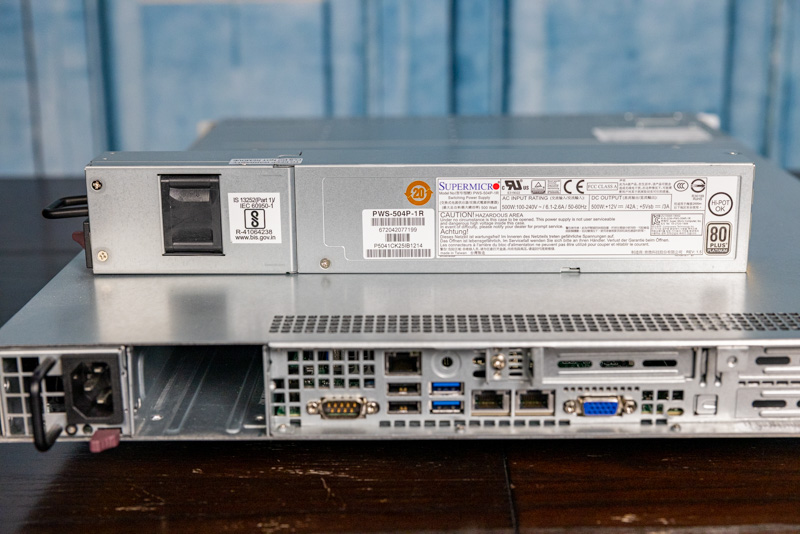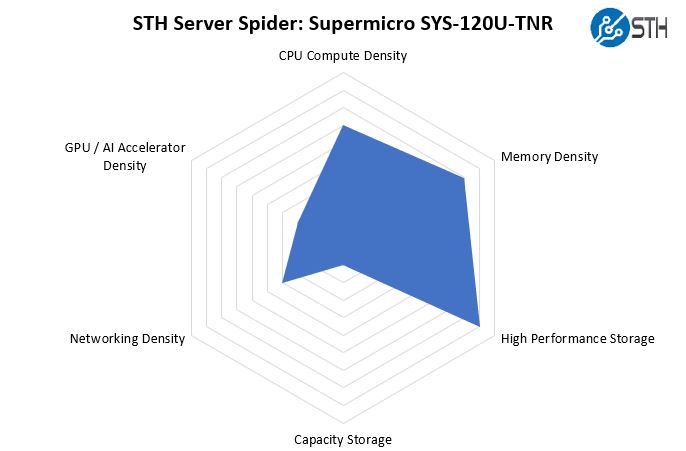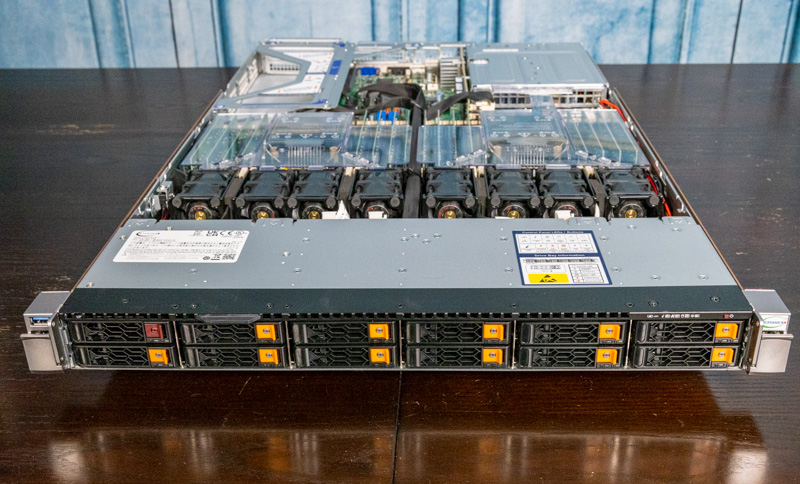Supermicro SYS-120U-TNR Power Consumption
Since we had a relatively full configuration, we wanted to see if the 1.2kW 80Plus Titanium PSUs were sufficient.

We tested these in our data center with 70% RH on 208V power. With the Intel Xeon Gold 6330 CPUs we saw a maximum of around 752W. Under normal “heavy” 70-90% usage the system was often in the 600-700W range. Perhaps the key takeaway here is that the solution uses the 1.2kW PSUs well, but the new Ice Lake chips certainly are designed to use more power than the previous generation.
This is actually a big deal for data center operators. 40x 1U systems each using 750W is around 30kW and those are using the lower-power 205W Gold 6330 CPUs. Using the Platinum 8380, this would be closer to 40kW. Assuming two high-speed switches at 500-1.3kW each, and one effectively needs 44kW racks for a full rack of the higher-end version of these systems. Putting that in perspective, the most common rack you will find in US data centers is 208V 30A which delivers just under 5kW usable per rack. Many facilities will struggle cooling full racks of these servers which may push folks to look at the 2U Supermicro Ultra alternative to stay within facility power and cooling limits.
STH Server Spider: Supermicro SYS-120U-TNR
In the second half of 2018, we introduced the STH Server Spider as a quick reference to where a server system’s aptitude lies. Our goal is to start giving a quick visual depiction of the types of parameters that a server is targeted at.

As a 1U platform, we get a nice platform that has a good mix of expansion capability still in 1U of space. Supermicro has other Ultra servers with 3.5″ storage for capacity. It is also likely that we will switch our high-performance scale next year as E1.S EDSFF becomes more popular. Still, it is great that one does not have to sacrifice that much storage or PCIe density in this 1U platform.
Final Words
Supermicro has a wide range of systems, and that is important context here. The company has 1P platforms such as the Supermicro SYS-510P-WTR along with cost-optimized WIO, channel-optimized, storage and GPU optimized platforms, density optimized 2U4N and blade platforms, and even custom form factors for 5G ORAN and other markets. As such, this platform is designed really with a specific purpose: to be a high-end 1U offering for Supermicro. This is the system that Supermicro positions against the Dell EMC PowerEdge R650, HPE ProLiant DL360 Gen10 Plus, and other alternatives. As such, we see a more polished system that is designed more like systems from that market, versus other segments.

In our testing, the Supermicro SYS-120U-TNR provides a lot of versatility while also having focus. With 48x PCIe Gen4 lanes dedicated to the 12x 2.5″ NVMe SSD bays and four internal PCIe Gen4 x16 slots, the system is designed to utilize the new I/O capabilities of the Ice Lake Xeon processor series, even in the more compact 1U form factor. We will just quickly note that one now 1U servers come with their own considerations such as rack power and data center cooling.




Hi Patrick, according to Supermicro’s documentation, the two PCIe expansion slots should be FH, 10.5″L – which makes this one of the very few 1U servers that can be equipped with two NVIDIA A10 GPUs.
Can you confirm that it is the case ?
The only other 1U servers compatible with one or two A10 GPUs that I know of are the ASUS RS700-E10 that you recently reviewed, and the ASUS RS700A-E11 which is similar and equips AMD Milan CPUs.
For example, all 1U offers from Dell EMC only have FH 9.5″ slots.
This one supports 4 double width GPUs: https://www.supermicro.com/en/products/system/GPU/1U/SYS-120GQ-TNRT
Is supermicro viable from a support perspective for those around the 25 server range?
Like with any other product, the first thing you notice is the build quality. This is on the complete other end of the spectrum compared to Intel and Lenovo servers. Everything is fragile, complicated, tight, bendable. The fans; laughable.
IPMI usually works, but sometimes when you reboot, ipmi seems to reboot. Takes a minute or two and it’s back again.
HW changes updates in IPMI when it’s ready, it can take a couple of reboots to show up.
We tried a lot of different fun stuff due our vendor providing us with incompatible hardware, like;
Upgrading from 1 -> 2CPU’s with a Broadcom NIC in one of the PCIe slots. This does not work with Windows (for us).
Upgrading from 6 -> 12NVMe, drivers required which again requires .net 4.8.
Installing risers and recabling storage. How complicated does one have to make things ?
Hopefully we will soon start using the system. The road has so far been painful, not necessarily Supermicro’s fault.
It’s awesome that one can put 6 NVMe drives on the lanes of the first CPU. Making this a good cost-effective option for 1 CPU setups with regards to licensing.